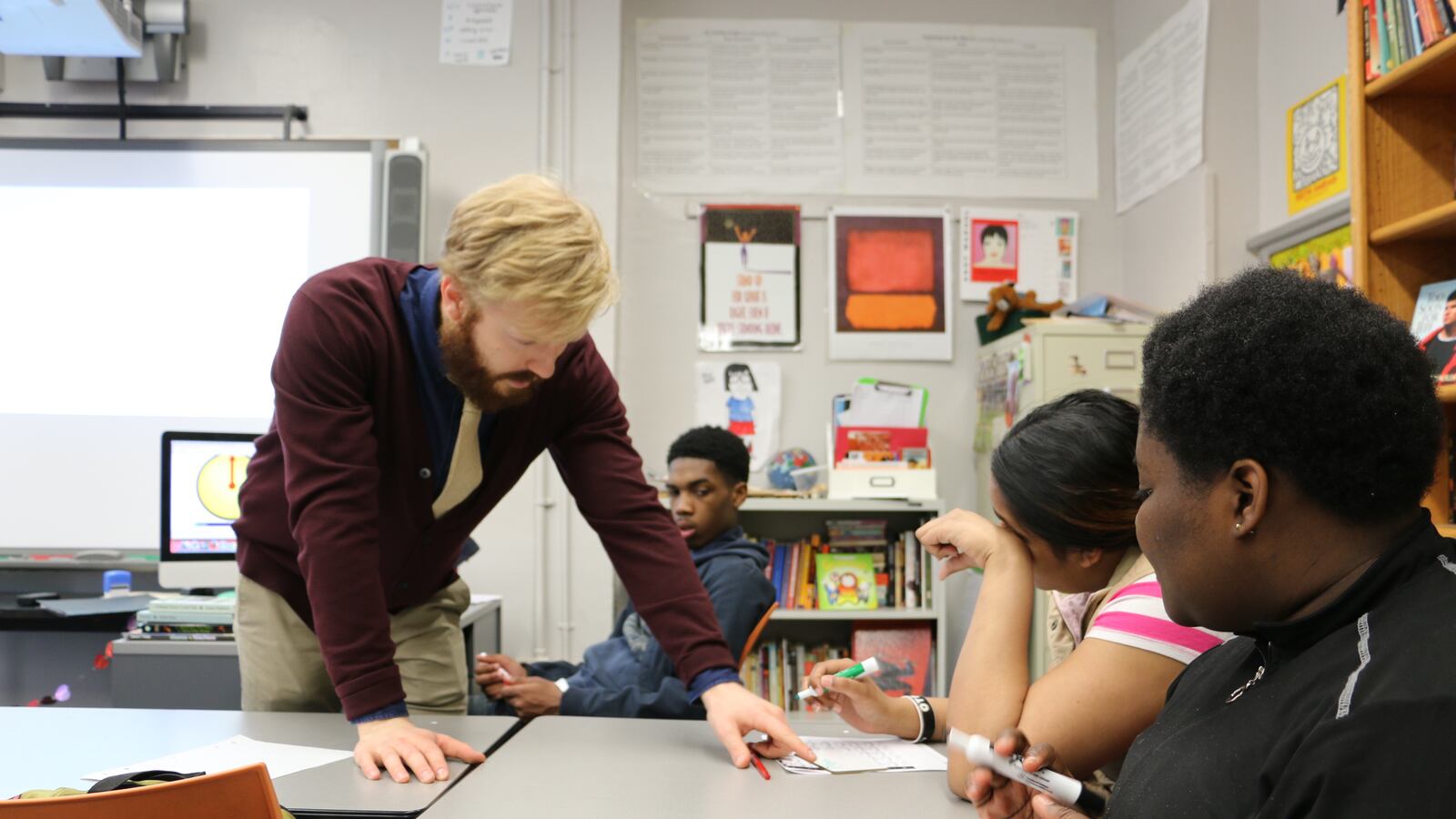New York City is beefing up oversight of its alternative high schools, issuing new admissions policies in an effort to make sure off-track students aren’t turned away.
The new rules apply to the city’s 52 transfer schools, which work to quickly catch up students who have dropped out or fallen behind at traditional high schools. Transfer schools admit students directly and typically require an in-person interview to enroll — though some have also required reading tests, letters of recommendation, or a “probationary” period.
A new set of policies quietly issued this spring appear designed to curtail some of those practices. Transfer schools, which enrolled about 13,000 students last year, will not be allowed to test students before they’re admitted, look at attendance or suspension records, and may not admit students for a probationary period, city officials confirmed.
Transfer school leaders have said that some screening mechanisms are essential to ensure students — most of whom have become disengaged with school at some point — are committed to giving school another try before they enroll. But the new policies suggest the education department is also concerned about giving schools too much autonomy to choose among some of the city’s most vulnerable students.
“The goal is to make the process more transparent, easier, and effective for students and families, and to ensure better tracking and accountability within the process,” education department spokesman Will Mantell wrote in an email. Transfer schools will also have to submit more data to the city on which students are rejected or admitted, Mantell said.
City officials said transfer schools have not been allowed to use reading tests, attendance records, and a handful of other criteria in admissions decisions. But last year’s transfer school directory, individual school websites, and interviews with transfer school leaders indicate that some violate those rules or don’t make clear how records or test results will be used.
The schools are also getting new oversight. A new “coordinator of enrollment” will report to Paul Rotondo, the superintendent responsible for transfer schools. He is also now empowered to place students directly into those schools, specifically when a student has been denied admission to three transfer schools. (Officials stressed that all placement decisions will be made in consultation with schools.)
The city could not immediately say how many students have been denied admission three times.
Rotondo, who previously served as a transfer school principal, said the new policies are not designed to limit transfer schools’ ability to make decisions at the school level.
“From the moment [a student] enters the school building, there’s that human touch, that interview, where the school is looking for the student to be reflective and give a hard look at what got in the way in prior years,” Rotondo said.
Michael Rothman is the executive director of Eskolta, a nonprofit that works with about 20 transfer schools, and a former education department official. He said the policy appeared to be an effort to address “the frustration of what seems like a black box” of transfer school admissions, while preserving schools’ ability to interview students.
“There’s a perception when you’re on the outside of it that [transfer schools are] just looking for students who can graduate,” Rothman said. “But it’s much more that we’re looking for students who can reengage.”
The new policies came a few months before city officials announced plans to eliminate the “limited unscreened” admissions method for high schools, which give preference to students who attend an open house or citywide high school fair. Still, one-third of the city’s traditional district high schools have screened admissions policies.

